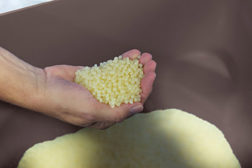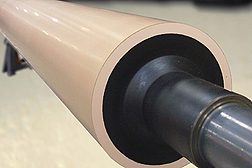Manufacturers
3D printers will increasingly be used to manufacture direct production parts and finished goods in a variety of applications.
Read More
IP in Depth: Effective Preissuance Submissions
Preissuance submissions are a one-chance opportunity to present prior art in such a way that an examiner will be convinced to apply the prior art to reject pending claims in a patent application.
June 2, 2014
Editor's Memo: Potpourri
We've got lots of exciting things happening: the annual Dispensing & Curing Equipment Directory, the ASI Top 25 and the ASI Readers' Choice Awards.
June 2, 2014
Program Highlights for the ASC Spring 2014 Convention and Expo
The Adhesive and Sealant Council Spring Convention and Expo is welcoming hundreds of visitors from around the world.
April 24, 2014
Emerging Hot-Melt Technologies for Package and Container Sealing
New technology has eliminated many of the drawbacks of the previous generation of hot-melt adhesive equipment.
April 1, 2014
Advancing Adhesives: High-Performance Epoxy Paste for Aircraft Applications
A new structural adhesive for metal and composite aircraft parts reduces cure time and costs.
April 1, 2014
Market Trends: "Smart" Packaging on the Rise
Active and intelligent packaging demand is expected to grow 8% annually to 2017.
April 1, 2014
What you need to know about rollers for adhesives and coating processes
The application of adhesives, sealants and coatings requires a range of specialized rollers with specific roll coverings, finishes, and temperature specifications.
April 1, 2014
Focus On: Adhesive Suppliers and Manufacturers Make Strides in Serving the Packaging Sector
A key requirement of any leading adhesive company is not only to meet customers' needs but to predict them.
April 1, 2014
Differential Release Liners Defined
Differential release liners often serve as critical components in the manufacture of tapes, fiber composite and medical materials.
April 1, 2014
Keep the info flowing with our eNewsletters!
Get the latest industry updates tailored your way.
JOIN TODAY!Copyright ©2024. All Rights Reserved BNP Media.
Design, CMS, Hosting & Web Development :: ePublishing










